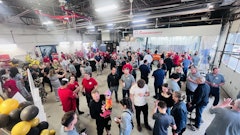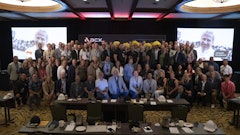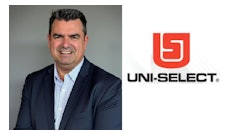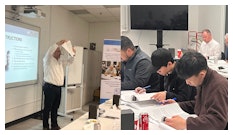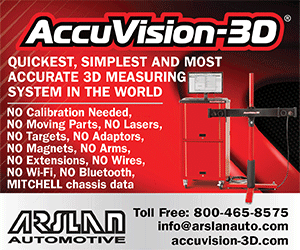
The automotive aftermarket is not immune to technological advancements—and changes will come rapidly
By SYLVAIN SEGUIN,
president of Fix Network Canada
Change is inevitable and to make it in any business, you must be flexible to stay relevant. And the evolution of technology is keeping all of us on our toes.
The aftermarket business is no different when it comes to innovation in technology. We’ve been shifting gears and learning more and more about the state-of-the art advanced technology that is coming our way. From Electric Vehicles (EVs), Advanced Driver-Assistance Systems (ADAS) including adaptive cruise control, collision avoidance, GPS integration – it is imperative we learn all there is to know about these advancements and how to repair them to OEM standards.
Industry experts predict that the future of passenger vehicles will be electric, propelled by consumer interest and the regulatory environment. Electric vehicle (EV) adoption accelerated in the second half of 2020 and has remained steady. According to SEMA’s Future Trends 2023 report, the EV market is poised for significant growth in the next decade, with new sales projected to hit 39 percent by 2035.
Electric vehicles present exciting opportunities for our industry. Electric vehicles may take some time to reach the same level as internal combustion engines in terms of sales and adoption (according to SEMA, there are nearly 300 million gas-powered cars and trucks on US roads and displacing them will take many decades) but those of us in the aftermarket industry must determine if we are prepared to repair these sophisticated machines. In case of a collision, electric vehicles demand a completely different approach than just tending to dent repair. We are several years away from fully autonomous vehicles on the road. But it’s never too early to prepare for the next technological evolution and understand how it might disrupt the aftermarket industry.
Artificial Intelligence (AI) is now turning the notion of a traditional automotive body shop upside down. AI and computer vision systems are playing key roles in streamlining diagnostics and inspection processes in critical aftermarket operations. Sophisticated AI algorithms and machine learning processes can manage every aspect of repair shop operation at lightning-fast speeds—from computing to quick photo estimation, to complete inspection of the vehicles, to providing customers real-time information about the extent of the damage. At the same time, it is also speeding up transmission of repair-related information. From EVs to AI, just having the right equipment and knowledgeable technicians is no longer an option. Body shops must understand the latest auto manufacturing and technology developments to support their customers better. And training employees is key.
The processes and requirements change from one year to the next due to new equipment complexities or raw materials used in the construction of different components of the structure of the vehicle. Training therefore should be considered as an ongoing priority for shops.
At our Fix Network World training centers, technicians working for our strategic partners are continuously trained in the latest AI processes and repair procedures to ensure that they can repair the most advanced vehicles. Through ongoing mentoring, virtual reality-based training, we are successfully preparing hundreds of next-generation technicians who can confidently work on these sophisticated machines. As consumers expect more from their vehicles, OEMs and technology companies ramp up development to meet demand. In this situation, franchise networks are better positioned to pivot and adapt and support their customers.
For technicians, continuous learning should be a lifelong learning process. We need people with an open mind to agree that the repair process will evolve from year to year. Regular training and refresher courses for skilled technicians in the most advanced collision repair technologies prepare them to be better prepared for the future.
As technology evolves, electronic components become more sophisticated and alloys used in the construction of cars become more complex, technicians can no longer rely on past experiences only. They need to read every OEM technical data sheet prior to any structural repair to ensure they meet OEM recommendations and standards for a particular vehicle.
Another important element taking the AI technology forward is certification for shops and technicians. Certification methods such as I-CAR demonstrate to customers and insurance partners that the team has been trained to manage the most complex mechanical and collision repair requirements and that the shop has the latest equipment to ensure all repairs and services are according to manufacturer specifications.
Many believe that the technology is very complicated and requires a great deal of training and investment. While the benefits of incorporating AI technology in shop operations are many, the biggest challenge is obviously the cost. Shop owners are apprehensive if their investment in the technology and the time can translate into significant returns quickly. As the saying goes ‘you have to spend money to make money’.
If shops do not make the right investments to keep up with innovation, body shops risk being left behind. The benefits far outweigh the disadvantages and the investment in both time and money will certainly pay off in the longer run. As the former Chairman and CEO of General Electric, the late Jack Welch, said, “Change before you have to.” Whether collision repairers adopt the technology or not, there’s no doubt about it – change is here to stay.









